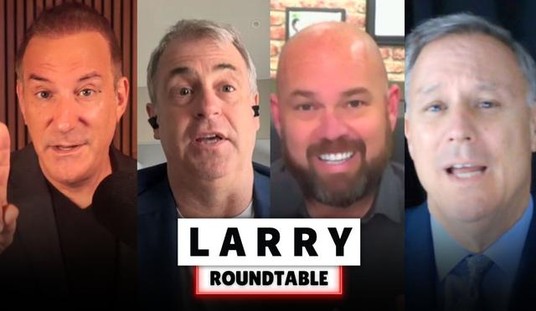The poverty rate in the United States, reports the Census Bureau, increased to 14.3 percent last year, up from 13.2 percent in 2008, bringing the number of Americans living in poverty to its highest levels since 1994. This is not the change on which Obama voters were counting.
The numbers, while distressing, require some elaboration, though, because poverty in America isn't what it used to be. They also raise an interesting question, on which, more in a minute.
First, the numbers. The official calculation of the 2009 poverty rate was income below $11,161 for an individual, or below $21,756 for a family of four. But these benchmarks do not include government benefits ranging from housing subsidies, food stamps, Medicaid, fuel assistance, the Earned Income Tax Credit, or welfare. Further, poverty is a relative thing. As the American Enterprise Institute's Nicholas Eberstadt noted in 2008, "In 1973, almost three-fifths of the households in the lowest income quintile lacked a car. In 2003, by contrast, over three-fifths of poverty-level households owned one or more cars. ... Trends in furnishings and appurtenances tell the same story: poor households' possession of modern conveniences has been growing rapidly. For many of these items -- telephones, television sets, central air conditioning, and microwave ovens -- prevalence in poverty-level households in 2001 exceeded that of median-income households in 1980."
Clearly though, an increase in poverty -- however far removed from the desperation and hunger that characterized poverty during the Great Depression -- is a wretched thing. The increase in poverty among children under age 6, for example, jumped from 21.3 percent in 2008 to 23.8 in 2009.
Here is a curious thing about that increasing poverty, though -- and it's something that has received very little press attention: It has not resulted in a higher crime rate. In fact, according to the FBI, even as unemployment was spiking during 2009, the rate of murders, rapes, robberies, and aggravated assaults declined by 4.4 percent compared with the previous year. As even the Washington Post acknowledged, the conventional wisdom for many decades has been that "economic trouble breeds lawlessness."
Recommended
In 1967, President Lyndon Johnson's Crime Commission declared that "Warring on poverty, inadequate housing, and unemployment is warring on crime. A civil rights law is a law against crime. Money for schools is money against crime." New York City Mayor John V. Lindsay, a liberal Republican, agreed, saying, "If we are to eliminate the crime and violence in this country, we must eliminate the hopelessness, futility, and alienation from which they spring." Thousands of professors, journalists, politicians, and community activists assured us that crime would not be controlled until the "causes of crime" were addressed.
But starting in the early l990s, crime rates began a steep decline and the recession has not interrupted that trend. What happened? Did we successfully vanquish hopelessness, futility, and alienation? The numbers, as the Christian Science Monitor observed, have left "a lot of criminologists scratching their heads." They've speculated, not completely implausibly, that higher unemployment levels translate to more people at home and fewer opportunities for property crimes, and (less convincingly) that social programs like "community outreach programs" are paying off.
Conservatives, for our part, have argued that smarter policing and tougher sentencing of career criminals accounts for falling crime rates. From 1991 to 2004, for example, New York City saw its violent crime rate decline by 75 percent. Starting in the 1980s, communities across the country have hired more police, passed tougher sentencing laws, and kept criminals in prison longer.
Since 1980, America's prison population has increased by 350 percent, while the overall population has risen by 33 percent. By contrast, as political scientist James Q. Wilson points out, during the same period, Great Britain made a big effort to reduce its prison population. During the following decade, Great Britain's crime rate spiked, while ours declined.
And yet, the numbers do suggest a measure of humility among analysts on all sides of the question. I, for one, believed a decade ago that the rising numbers of fatherless young men would cause crime rates to increase despite higher rates of incarceration and better policing. The reverse happened. And while we can be grateful for the reduction in crime, we cannot lose sight of the purchase price -- 2.3 million Americans behind bars, thousands of children in foster care, and $70 billion spent on corrections.

























Join the conversation as a VIP Member